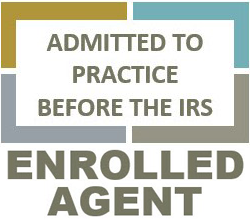Summary of Tax Law Changes for 2025
What is NOT changing
- Tax Brackets revised in 2018 and set to expire in 2025 are now permanent.
- Standard Deductions that were increased in 2018 and set to revert lower in 2025 are now permanent.
- Social Security Benefits are still taxable up to 85% for taxpayers with additional sources of income. (If Social Security is your only source of income, your benefits are not taxable, as before.)
There has been a lot of misinformation about this. Some sources claim that “no tax on Social Security” is in the new law but I assure you this is not true. The tax rate on Social Security has not changed. But see the Additional Deduction for Seniors, below.
- Miscellaneous Deductions, including deductions for Employee Business Expenses, that were eliminated in 2018 and set to come back in 2025 are now permanently eliminated.
- Mortgage Interest Deduction limited to first $750,000 of loan balance (set to revert back to $1M in 2025) is now permanent.
- Deductions for Moving Expenses and Casualty Losses that were limited in 2018 and set to come back in 2025 are now permanently limited.
- Alternative Minimum Tax threshold increased in 2018 and set to revert lower in 2025 is now permanent.
Expiring Tax Credits
- The Clean Vehicle Credit expires on September 30, 2025.
- The Energy Efficient Home Improvement Credit expires on December 31, 2025.
- The Residential Clean Energy Credit expires on December 31, 2025.
- The Alternative Fuel Vehicle Refueling Property Credit expires on June 30, 2026.
Click here for more details about these expiring credits.
Child Tax Credit increase
Beginning with the 2025 tax year, the Child Tax Credit is increasing from $2,000 per child to $2,200 per child (up to age 16). It was previously set to revert to $1,000 in 2025.
- The amount of the credit will be adjusted for inflation each year beginning in 2026.
- The amount of the credit will be reduced for taxpayers whose Adjusted Gross Income (AGI) is higher than $200,000 (or $400,000 if married filing jointly). There is no credit for taxpayers with AGI over $240,000 (or $440,000 if married filing jointly).
- The child and at least one parent (filing a joint return) must have a valid Social Security Number to claim the credit.
Temporary Tax Breaks starting in 2025
Additional Deduction for Seniors. Taxpayers who are 65 by the end of 2025 will receive an additional $6,000 deduction. For married seniors both 65 and over filing a joint return, the additional deduction will be $12,000.
- Eligible seniors will receive this additional deduction even if they itemize deductions.
- The additional deduction is reduced for seniors whose AGI is higher than $75,000 (or $150,000 if married filing jointly). Seniors with AGI over $175,000 (or $250,000 if married filing jointly) will not receive any additional deduction.
- No additional deduction is allowed for taxpayers who are married filing separately.
- You must have a valid Social Security Number to claim the additional deduction.
- The additional deduction is available only for tax years 2025-2028 and expires at the end of 2028.
SALT Limit Increase. The limit on State and Local Taxes (SALT) that can be deducted when itemizing is increased to $40,000 ($20,000 if married filing separately).
- The limit will increase by 1% each year after 2025. So for 2026 the limit will be $40,400.
- The limit will decrease for taxpayers with AGI higher than $500,000 ($250,000 if married filing separately) and will be $10,000 for taxpayers with AGI of $600,000 or more ($300,000 if married filing separately).
- This increased limit is available only for tax years 2025-2029 and expires at the end of 2029. In 2030 the limit will revert back to $10,000 for all taxpayers.
No Tax on Tips under certain conditions:
- Applies only to tips reported to your employer and included on your W-2.
- Available only for certain occupations that “customarily” receive tips. A list of these occupations may be found here.
- The deduction is reduced or eliminated for taxpayers with income more than $150,000 ($300,000 if married filing jointly).
- The maximum amount that can be deducted in a given year is $25,000.
- It is not necessary to itemize deductions to receive this deduction.
- No deduction is allowed for taxpayers who are married filing separately.
- You must have a valid Social Security Number to claim the deduction.
- The deduction is available only for tax years 2025-2028 and expires at the end of 2028.
No Tax on Overtime under certain conditions:
- Applies only to overtime pay reported by your employer on your W-2.
- The deduction is reduced or eliminated for taxpayers with income more than $150,000 ($300,000 if married filing jointly).
- The maximum amount that can be deducted in a given year is $12,500 ($25,000 if married filing jointly).
- It is not necessary to itemize deductions to receive this deduction.
- No deduction is allowed for taxpayers who are married filing separately.
- You must have a valid Social Security Number to claim the deduction.
- The deduction is available only for tax years 2025-2028 and expires at the end of 2028.
No Tax on New Car Loan Interest under certain conditions:
- If you purchase a new car in 2025-2028, you can deduct up to $10,000 of the interest you pay on the loan each year until 2029.
- Applies only to new cars, SUVs, trucks, and motorcycles under 14,000 lbs that have “final assembly” in the US. Loans for used cars are not eligible.
- Does not apply to any loans for cars purchased before 2025, even if you refinance in 2025-2028.
- The deduction is reduced or eliminated for taxpayers with income more than $100,000 ($200,000 if married filing jointly).
- It is not necessary to itemize deductions to receive this deduction.
- The deduction is available only for tax years 2025-2028 and expires at the end of 2028.

